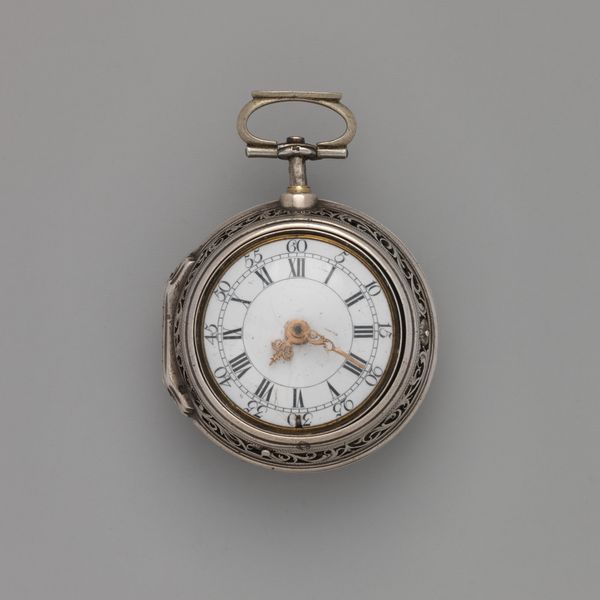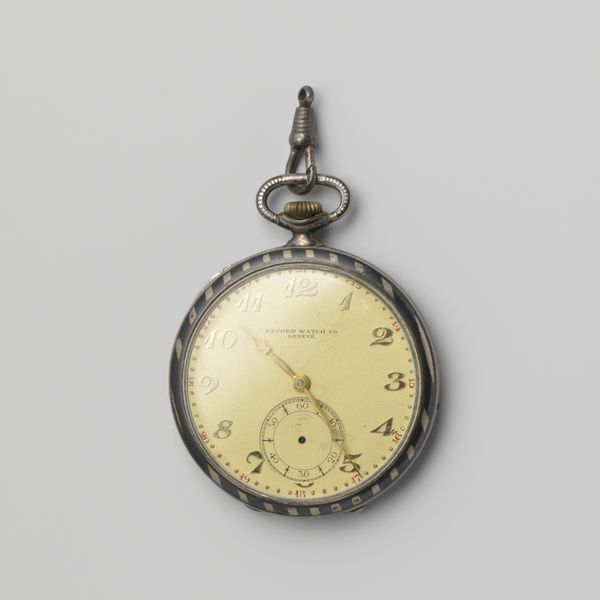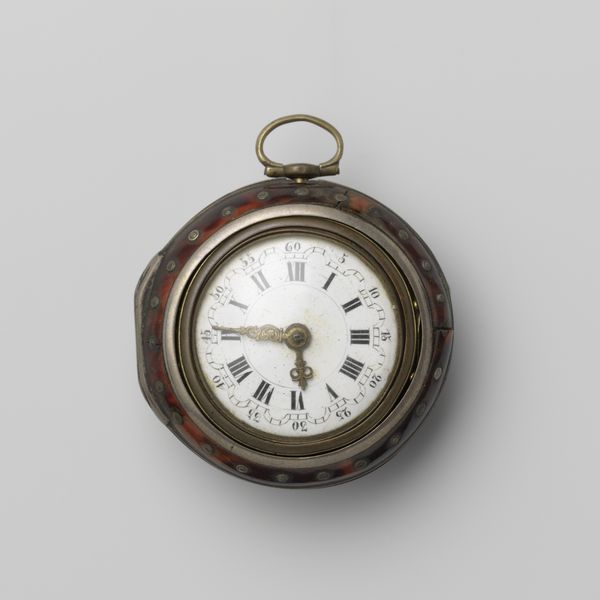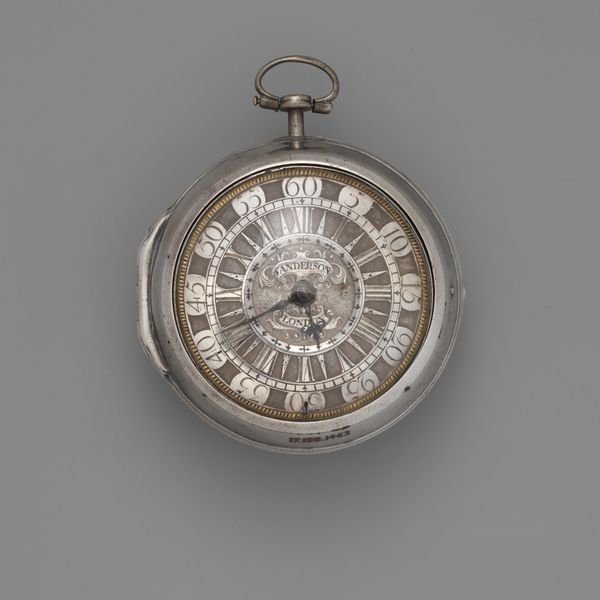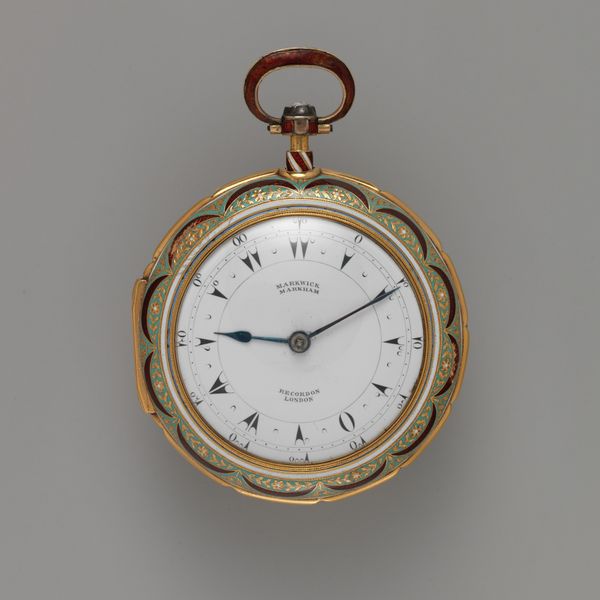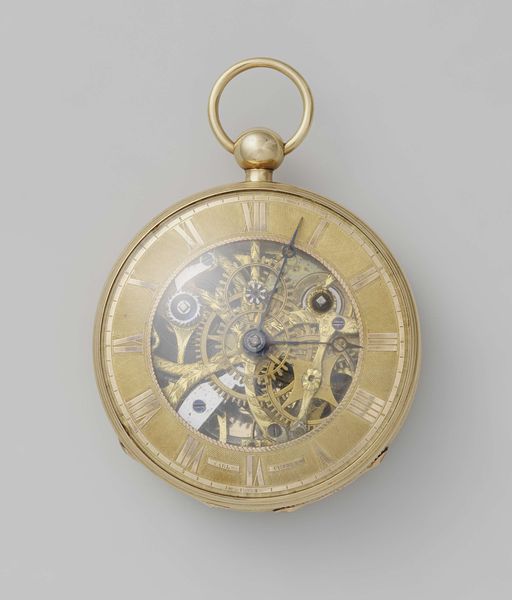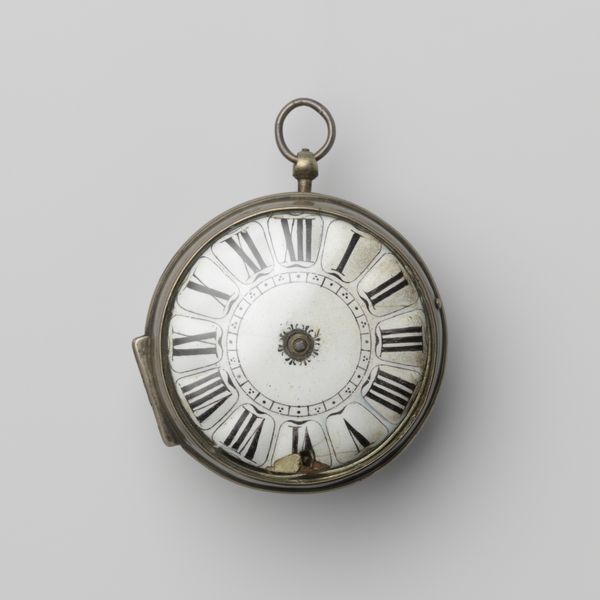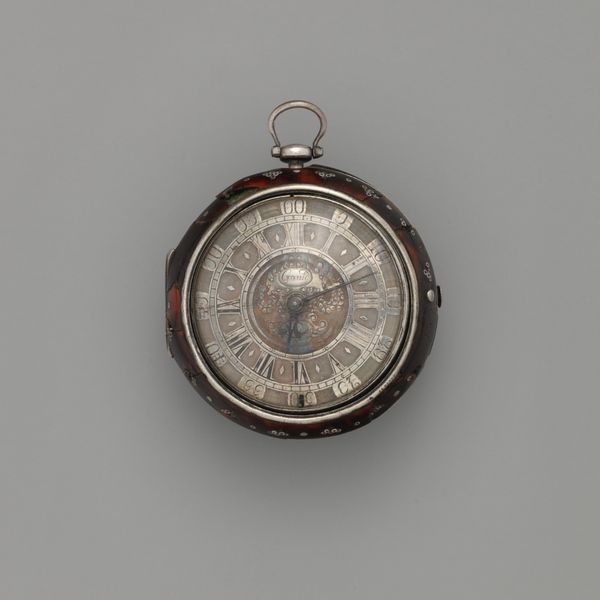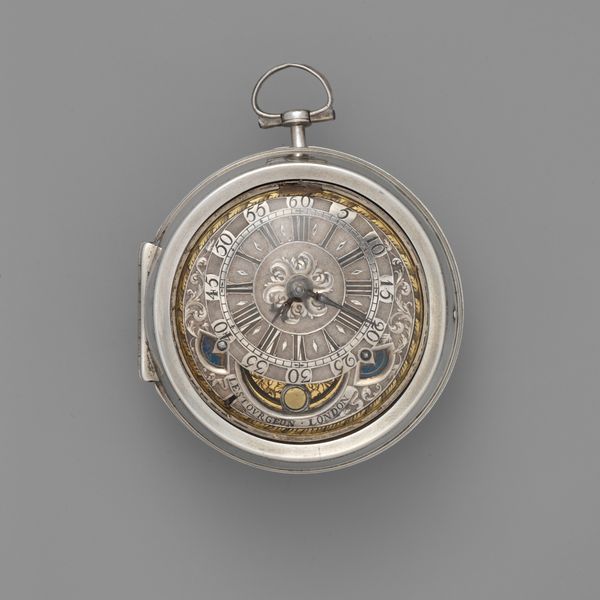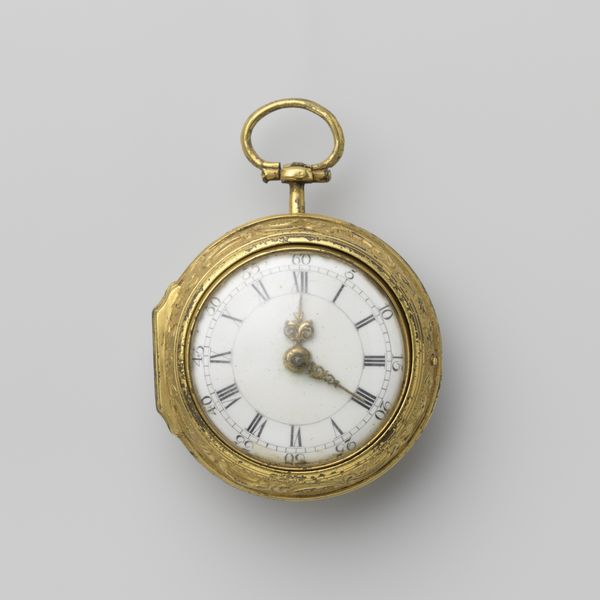
#
portrait
#
baroque
#
decorative-art
#
miniature
Dimensions: diameter 4 cm, height 6.5 cm, width 4.8 cm, depth 2.3 cm
Copyright: Rijks Museum: Open Domain
Editor: This is a silver men's pocket watch with a double undecorated case, dating from around 1400 to 1950. The face is particularly striking, featuring what looks like a miniature painting. It feels almost theatrical, like a scene from a play. What social context informs this little scene? Curator: Precisely! Look closely—what narrative threads can you discern? Pocket watches, particularly those adorned like this, became potent symbols of status and power during that extensive period. The figures recall the styles worn by aristocracy. Is there a correlation with wealth and power being inextricably tied to notions of timekeeping? Editor: So, you’re saying it is not simply decorative? Is this small illustration saying something specific about class and representation? It’s labelled with text: "Willem de Viffde, Prins van Lange." I wonder who would have worn such a statement piece. Curator: Precisely! Think about the cultural implications of miniaturization itself. Is there a subtle echo of the power dynamics inherent in portraiture or the notion of the "divine right" of princes, compressed into this portable format? What about accessibility and privilege: the ability to literally carry one's status and affiliation with you? How might it affect the gaze of the beholder, the wearer, versus the unprivileged? Editor: That’s fascinating! It really makes me reconsider my initial reading of it simply being decorative. It’s more like a wearable declaration of allegiance. Curator: Exactly! Consider how something as seemingly benign as a decorative object can reveal intricate connections to broader social structures, beliefs, and power relations that remain in modern society. This is what makes the watch far more than merely decorative, and gives it ongoing cultural value.
Comments
No comments
Be the first to comment and join the conversation on the ultimate creative platform.
